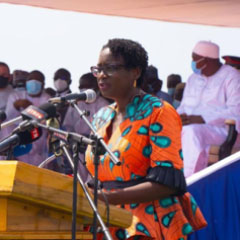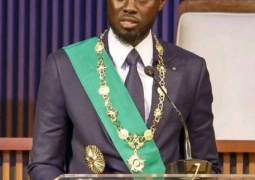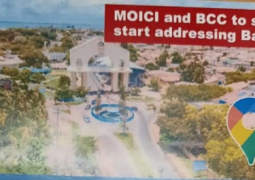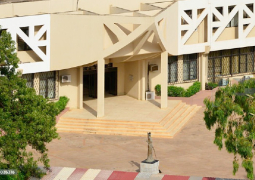
Speaking during the inauguration of the OMVG electrical project in Some, Madam Boroffice explained that at first, the project will reduce the cost and improving the security of electricity. She added that The Gambia has always relied on generating electricity from Heavy Fuel Oil which is an expensive and dirty form of electricity.
“Many of NAWEC’s generating engines are old and in poor condition, breaking down regularly and causing outages in supply, representing a major obstacle for doing businesses, and disrupting day to day life for households. Through the WAPP, The Gambia will have the opportunity to import large volumes of lower cost electricity for example hydro from Guinea or gas to power from Senegal and Cote D’Ivoire.”
She continued that this will help The Gambia achieve its targets to reduce the cost of supply, improve stability of supply, and reach its Paris Agreement goals to reduce carbon emissions.
Continuing to the second impact on increasing access to electricity, she said Barrow has set the ambitious objective of achieving universal access to electricity by 2025, five years ahead of the SDG targets.
“This will be made possible in part through the OMVG interconnection, and the World Bank financed ECOWAS regional access project which will finance the medium voltage and low voltage interconnections from the OMVG substations at Soma and Brikama. Through this project, already under implementation, 300 villages will be connected to electricity.”
On her third point, she added that the interconnection will provide new opportunities for The Gambia to develop renewable energy sources, adding that the energy sector roadmap, financed by the World Bank, identifies solar energy as a major opportunity for The Gambia to reduce the cost of energy and clean the energy mix.
“The OMVG interconnection offers The Gambia to leverage these opportunities. One good example of this is the 150 MW regional solar plant that is expected to connect to the Soma substation. The World Bank is financing the feasibility study for this project, which could significantly scale up The Gambia’s renewable energy and potentially provide an opportunity to export to neighboring countries.”
Boroffice said the WB is proud to be the largest financier of the OMVG interconnection, as a key part of their broader portfolio of support to The Gambia’s energy sector. She added that just as the project was complex to construct, operational phase will be even more challenging.
“More work is still needed to put in place the formal agreements needed to supply and transmit the electricity, and to have a permanent operator in place to operate the line.”




